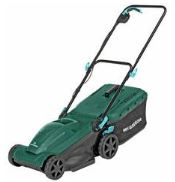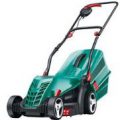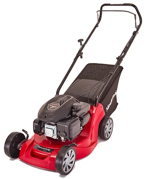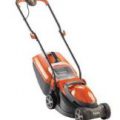If you are experienced enough to handle this type of work of sharpening your lawn mower blades, then check out the helpful tips outlined in the videos below. Otherwise please use your local Lawn mower service provider.
Lawnmower blades are essential components of lawnmowers that are responsible for cutting grass to maintain a neat and even lawn and these blades typically consist of a curved metal body with a sharp cutting edge. Regularly sharpening lawnmower blades, ideally at the beginning of each mowing season and as needed throughout, will help maintain a healthy lawn and ensure efficient grass cutting.
View also: Popular Weed killers here
Video Tips for Lawnmower Blades
Video 1 – How to Sharpen a Lawn Mower Blade
Primary Function
The primary purpose of lawnmower blades is to slice through grass blades cleanly and efficiently. They rotate rapidly, powered by the lawnmower's engine or motor, and create a cutting action as they make contact with the grass. This action ensures that the grass is cut evenly, promoting healthy growth and maintaining an aesthetically pleasing lawn.
Blade Types
Lawnmower blades come in various sizes and designs, depending on the specific type and model of the lawnmower. The most common types include high-lift blades, mulching blades, and low-lift blades. High-lift blades are designed to create a strong upward airflow, lifting the grass before cutting it. These blades are suitable for discharging clippings through a side chute or into a bagger attachment.
Mulching Blades
Mulching blades, on the other hand, are designed to finely chop grass clippings into smaller pieces and distribute them back onto the lawn. This process, known as mulching, allows the clippings to decompose quickly, returning nutrients to the soil and promoting a healthier lawn.
Low Lift Blades
Low-lift blades, also called standard blades, have a flatter design and are commonly used for basic grass cutting. They provide a standard cutting action without significant airflow or mulching capabilities.
Regular Sharpening
Regardless of the blade type, it is important to maintain and sharpen lawnmower blades regularly. Dull blades can tear grass instead of cleanly cutting it, resulting in an uneven and unhealthy lawn appearance. Sharpening the blades ensures optimal cutting performance and reduces strain on the lawnmower's engine or motor.
Precautions
It is crucial to handle lawnmower blades with care during maintenance or replacement. Always follow the manufacturer's instructions and take necessary safety precautions, such as wearing gloves and disconnecting the power source, to avoid accidents or injuries.
View also: Popular Ride on Tractor Mowers
Video 2 - How to Sharpen a Lawn Mower Blade
How to Sharpen Lawnmower Blades
Sharpening lawnmower blades is an important maintenance task that helps ensure clean and efficient grass cutting and this a basic step-by-step guide on how to sharpen lawnmower blades in your own lawnmower
Safety First
Before starting any maintenance work, ensure the lawnmower is turned off and the spark plug wire is disconnected to prevent accidental starting. Wear work gloves to protect your hands.
Remove the Blade
Depending on your lawnmower's design, you may need to tilt the mower or remove a blade cover to access the blade. Use a wrench or socket set to loosen and remove the bolt holding the blade in place. Be mindful of the blade's orientation to reinstall it correctly later.
Clean the Blade
Use a stiff brush or rag to remove any grass clippings, dirt, or debris from the blade. This step ensures a clean working surface for sharpening.
Secure the Blade
To safely sharpen the blade, you need to immobilize it. You can use a vice, a clamp, or a specialized blade-holding tool to hold the blade securely. Make sure it's stable and won't move during the sharpening process.
Inspect the Blade
Before sharpening, closely examine the blade for any deep nicks, bends, or signs of excessive wear. If you notice significant damage, it may be best to replace the blade rather than sharpen it.
Sharpen the Blade
Use a file, bench grinder, or a sharpening stone specifically designed for lawnmower blades. Follow the original cutting edge's angle and maintain a consistent stroke along the cutting edge. Remove an equal amount of material from both ends of the blade to maintain balance.
Check the Balance
A balanced blade is crucial for smooth and efficient operation. To check the balance, place the blade on a screwdriver or a nail, supporting it at its centre hole. If one side of the blade tilts down, it is heavier and needs additional material removed to regain balance. Continue filing or grinding until the blade is balanced.
Reinstall the Blade
Once the blade is sharpened and balanced, reattach it to the lawnmower. Ensure it is properly aligned and tightened according to the manufacturer's recommended torque specifications.
Test and Adjust
After sharpening and reinstalling the blade, start the lawnmower and let it run for a few minutes. Observe the cutting action and listen for any unusual vibrations or noises. If necessary, make minor adjustments to the blade's alignment to ensure an even cut. Remember to consult your lawnmower's manual for specific instructions or consult a professional if you're unsure about sharpening the blade yourself.
View also: Popular Petrol Lawnmowers
Lawnmower Type
Lawnmower blades used in electric, robotic, and petrol lawnmowers can vary in design and functionality to accommodate the specific needs of each type of mower and here are the common types of blades used in these lawnmower categories
Electric Lawnmower Blades
Electric lawnmowers are powered by electricity, either from a corded power source or a rechargeable battery. The blades used in electric lawnmowers are generally designed for efficient cutting while minimizing power consumption. Some popular types of blades used in electric lawnmowers include:
Mulching Blades
These blades are specifically designed to finely chop grass clippings into small pieces. They enable the clippings to be redistributed onto the lawn, acting as natural fertilizer. Mulching blades have a unique shape and additional cutting surfaces to facilitate the mulching process.
High-Lift Blades
High-lift blades are commonly used in electric lawnmowers equipped with grass collection bags. These blades feature an aggressive upward curve along the cutting edge, creating strong airflow that lifts grass clippings into the bag for efficient collection.
Robotic Lawnmower Blades
Robotic lawnmowers operate autonomously, navigating the lawn and cutting grass without direct human intervention. Blades used in robotic lawnmowers are typically designed to maximize cutting efficiency and minimize power consumption. Some key blade types used in robotic lawnmowers include:
Fine Mulching Blades
Robotic lawnmowers often utilize fine mulching blades that cut grass into extremely small pieces. These blades are designed to ensure efficient mulching and rapid decomposition of grass clippings, allowing them to serve as natural fertilizer.
Balanced and Lightweight Blades
Due to the smaller size and weight restrictions of robotic lawnmowers, the blades used are often designed to be lightweight and balanced. This ensures optimal performance and prevents excessive wear on the mower's motor and battery.
Petrol Lawnmower Blades
Petrol lawnmowers are powered by internal combustion engines, providing a high level of cutting power. The blades used in petrol lawnmowers are typically designed to handle tougher cutting conditions and come in various types, including…
High-Lift Blades
Similar to those used in electric lawnmowers, high-lift blades for petrol lawnmowers generate strong upward airflow to lift and discharge grass clippings effectively. These blades are commonly used when side discharge or bagging is desired.
Low-Lift Blades
Low-lift blades are standard cutting blades commonly used in petrol lawnmowers. They have a flatter design without aggressive curves, providing a straightforward cutting action suitable for general grass cutting needs.
3-in-1 Blades
Some petrol lawnmowers feature 3-in-1 capabilities, allowing users to switch between bagging, side discharge, and mulching. 3-in-1 blades are versatile and designed to handle multiple cutting functions effectively.
View also: Popular Corded Electric Lawnmowers
Community Feedback
Have you any tips yourself when it comes to Lawnmower Blades? If so, please educate the wider community by leaving a comment in the comment box section provided below – so that others can learn also…








Recent Comments